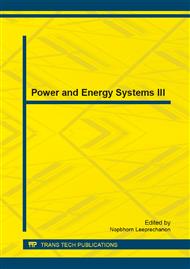[1]
H. Gao, S. Zhao, X. Cheng, X. Wang, L. Zheng: Chem. Eng. J. 223(2013)84.
Google Scholar
[2]
X. Hu, B. Liu, Y. Deng, H. Chen, S. Luo, C. Sun, P. Yang, S. Yang: Appl. Catal. B 107(2011)274.
Google Scholar
[3]
M. Dai, J. Li, B. Kang, C. Ren, Y. Dai, Y. Dong: Mater. Rev. 27(2013)83.
Google Scholar
[4]
C. Ma, W. Liu, H. Zheng, Y. Wang, Y. Luo: Inorg. Chem. Indust. 41(2009)24.
Google Scholar
[5]
J.H. Ramirez, F.J. Maldonado-Hódar, A.F. Pérez-Cadenas, C. Moreno-Castilla, C.A. Costa, L.M. Madeira, Appl. Catal. B: Environ. 75 (2007) 312–323.
DOI: 10.1016/j.apcatb.2007.05.003
Google Scholar
[6]
Y. Long, Z. Chen, Z. Liu, Z. Zhang, M. Wan, N. Wang: Chin. Phys. 12(2003)433.
Google Scholar
[7]
M. Noorjahan, V.D. Kumari, M. Subrahmanyam, L. Panda, Appl. Catal. B: Environ. 57 (2005) 291–298.
Google Scholar
[8]
J. Fernandez, M.R. Dhananjeyan, J. Kiwi, Y. Senuma, J. Hilborn, J. Phys. Chem. B 104 (2000) 5298–5301.
DOI: 10.1021/jp9943777
Google Scholar
[9]
P. Maletzky, R. Bauer, J. Lahnsteiner, B. Pouresmael, Chemosphere 38 (1999) 2315.
DOI: 10.1016/s0045-6535(98)00450-0
Google Scholar
[10]
M.M. Cheng, W.H. Ma, J. Li, Y.P. Huang, J.C. Zhao, Environ. Sci. Technol. 38(2004)1569.
Google Scholar
[11]
Y.P. Zhao, H.Y. Hu, Appl. Catal. B: Environ. 78 (2008) 250–258.
Google Scholar
[12]
Z. Sun, T. Yang, L. Wu, C. Dong, Y. Fan, D. Ge: European Pattern. CN2012121100120120626 (2012).
Google Scholar
[13]
F. Gao, D. Yang, D. Cui, R. He: Chinese Pattern. CN101337695(2009).
Google Scholar
[14]
Z. Ai, L. Zhang, F. Jia: Chinese Pattern. CN101717122(2009).
Google Scholar
[15]
J. Ren, L. Li: Chinese Pattern. CN1865157(2006).
Google Scholar
[16]
J. Zhou, L. Xu, R. Pan: Electron. Components Mater. 26(2007)6.
Google Scholar
[17]
Z. Chen, G. Wang, G. Xu: Higher Education Press, Beijing(2001).
Google Scholar
[18]
B. Derjaguin, L. Landau, Acta Physico Chemica URSS 14(1941)633.
Google Scholar
[19]
E. J. W. Verwey, J. Th. G. Overbeek: Theory of the stability of lyophobic colloids, Amsterdam: Elsevier(1948).
Google Scholar
[20]
Russel, W. B.; Saville, D. A.; Schowalter, W. R., Colloidal Dispersions, New York: Cambridge University Press (1989).
Google Scholar
[21]
B.V. Derjaguin, L. Laudau: Acta Physicochim. USSR 14 (1941)633.
Google Scholar
[22]
E.J.W. Verwey, J. Th.G. Overbeek: Elsevier, Amsterdam(1948).
Google Scholar
[23]
C. Hou, T. Li, T. Zhao, H. Liu, L. Liu, W. Zhang: New Carbon Mater. 28(2013)184.
Google Scholar
[24]
R. Pan, Y. Wu, K. Liew: Appl. Surf. Sci. 256 (2010)6564.
Google Scholar
[25]
Y. Long, Z Chen, Z. Liu, Z. Zhang, M. Wan, N. Wang: Chin. Phys. 12(2003)433.
Google Scholar


